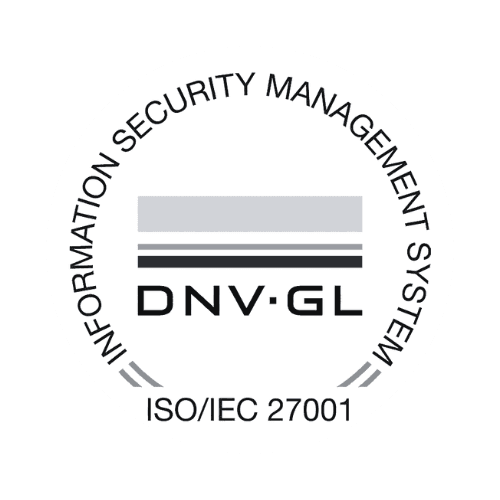Nichts verpassen & anmelden:
Written by AI
Workforce Management: Efficient Management of Employee Resources
Workforce management is an essential part of effectively managing employee resources in companies. It includes various processes and strategies to optimize workforce and ensure smooth workflow. This article examines the fundamentals, key components, technologies, challenges, and future trends of workforce management.
Fundamentals of Workforce Management
Definition and Significance of Workforce Management
Workforce management refers to the efficient planning, coordination, and control of a company's employee resources. It includes measures to optimize workforce planning, working time management, performance management, and employee engagement. By effectively controlling employee resources, companies can reduce labor costs, increase productivity, and improve customer satisfaction.
Workforce management is a crucial part of human resource management and plays an important role in achieving company goals. It enables companies to effectively utilize their employees and maximize their performance. By properly planning and controlling employee resources, bottlenecks can be avoided and efficiency enhanced.
Goals and Benefits of Workforce Management
The main goals of workforce management are to ensure sufficient employee capacity to handle the workload, minimize over and underutilization, improve work productivity, and optimize employee satisfaction. The benefits of workforce management include better utilization of employee resources, greater flexibility in work planning, improved employee motivation, and a reduction of overtime and absenteeism.
Effective workforce management can also contribute to strengthening employee retention and reducing turnover in the company. By deploying employees according to their skills and preferences, satisfaction and loyalty to the company increases, leading to higher employee loyalty and a better working environment.
Key Components of Workforce Management
Personnel Planning and Forecasting
Personnel planning and forecasting are important components of workforce management. It involves the analysis of past data, trends, and external influences to predict future personnel needs. Accurate personnel forecasting enables companies to optimally plan their employee capacity to avoid over or underutilization.
Personnel planning and forecasting is a continuous process that requires close cooperation between human resources, management, and other relevant departments. It is important that the forecasts are based on current and reliable data to make informed decisions and ensure flexibility to respond to unforeseen events.
Working Time Management and Planning
Working time management and planning aim to efficiently utilize employees' working time while ensuring compliance with labor laws and regulations. This includes creating work schedules, considering shift work, vacation planning, break times, and overtime regulations.
Effective time planning also takes into account employees' individual preferences to support their work-life balance and increase job satisfaction. By using technologies such as time and attendance management systems, companies can efficiently manage working hours while improving transparency and traceability.
Performance Management and Employee Engagement
Performance management and employee engagement focus on promoting individual performance and motivation of employees. This includes monitoring performance, feedback and reward systems, training and development opportunities, and measures to increase employee satisfaction and engagement.
A holistic approach to performance management also includes identifying performance deficits and implementing measures for improvement. Through regular feedback discussions, goal setting, and performance evaluations, employees can be specifically promoted and motivated to fulfill their full potential and remain bound to the company in the long term.
Technology in Workforce Management
Automation and Digitalization
Automation and digitalization play an increasingly important role in workforce management. By using technologies such as time and attendance systems, employee planning software, and real-time data analysis, companies can automate and optimize their workforce management processes.
Workforce Management Software and Tools
Workforce management software and tools provide companies with the opportunity to efficiently plan and manage their employee resources. These tools enable the creation of work schedules, tracking of working hours, performance monitoring, and analysis of employee data. By using workforce management software, companies can reduce operational costs while increasing productivity.
The advancing digitalization has also led to an increasing number of companies using cloud-based workforce management solutions. These cloud-based tools allow companies to securely store their workforce management data in the cloud and access it from anywhere. This increases flexibility and improves collaboration between teams.
Integration of Artificial Intelligence
Another important trend in workforce management is the integration of artificial intelligence (AI). By using AI algorithms, companies can create predictive models to more accurately forecast staff requirements and avoid bottlenecks or overcapacities. Furthermore, AI can help to consider individual employee preferences and skills to create optimal deployment plans.
Challenges and Solutions in Workforce Management
Handling Complexity and Uncertainty
Workforce management faces various challenges, such as changing job requirements, seasonal fluctuations, employee turnover, and unforeseeable events such as illness or accidents. To address these challenges, it is important to develop flexible personnel planning strategies, consider alternative work models, and maintain continuous communication with employees.
Promoting Employee Satisfaction and Productivity
Promoting employee satisfaction and productivity is another important topic in workforce management. Companies must ensure that working conditions are adequate, enable a good work-life balance, provide development opportunities, and address the individual needs and preferences of employees. This can help increase employee satisfaction and improve productivity.
Effective Talent Management
Another crucial aspect of workforce management is effective talent management. This involves identifying the right employees for the right positions, promoting their skills and potentials, and creating long-term development plans. Targeted talent management can ensure that companies have the necessary competencies and qualifications to achieve their business goals.
Future Trends in Workforce Management
Artificial Intelligence and Machine Learning
Artificial intelligence (AI) and machine learning are increasingly being used in workforce management. By using AI algorithms, companies can optimize work time models, improve personnel demand forecasts, and make automated decisions. Machine learning also helps to identify patterns and trends in employee data to take preventive measures and further optimize workflows.
The application of artificial intelligence in workforce management allows companies to use their personnel resources more efficiently and flexibly respond to changing requirements. This analysis also takes into account not only quantitative data but also qualitative aspects to achieve holistic optimization of work processes.
Flexible and Mobile Working
Flexible and mobile working is becoming increasingly important in the modern work environment. Employees demand more flexibility regarding working hours and location. Workforce management must adapt to these changes to increase employee satisfaction and attract talented employees. This can be achieved by using technologies such as cloud-based work platforms, virtual team tools, and flexible working time models.
However, introducing flexible work models also requires clear communication and transparent guidelines from management. It is important that both managers and employees understand the expectations and opportunities regarding flexible work to avoid misunderstandings and ensure effective implementation.
Overall, workforce management is crucial for the efficient use of employee resources and ensuring smooth operations in companies. By implementing suitable workforce management strategies, technologies, and solutions, companies can reduce labor costs, increase productivity, and improve employee satisfaction.








